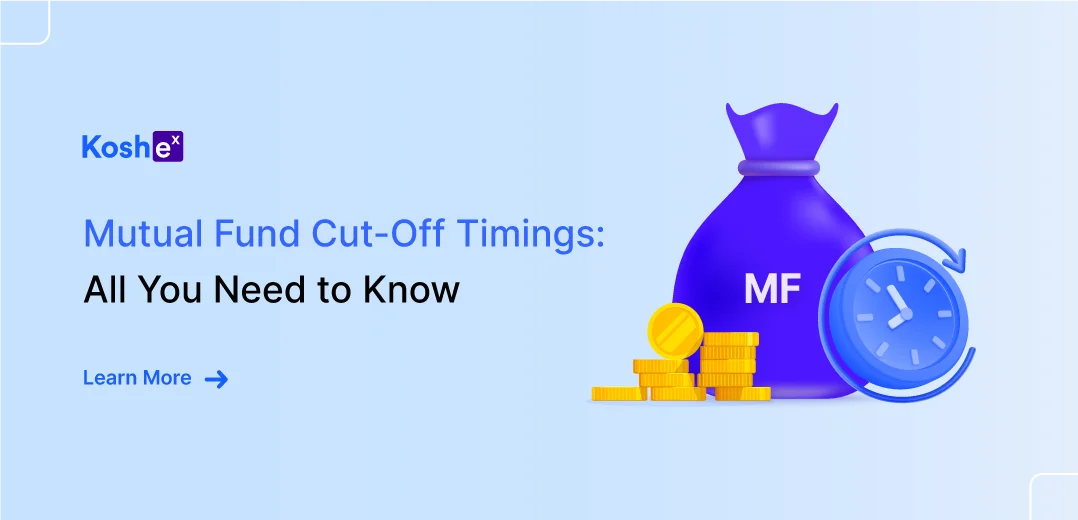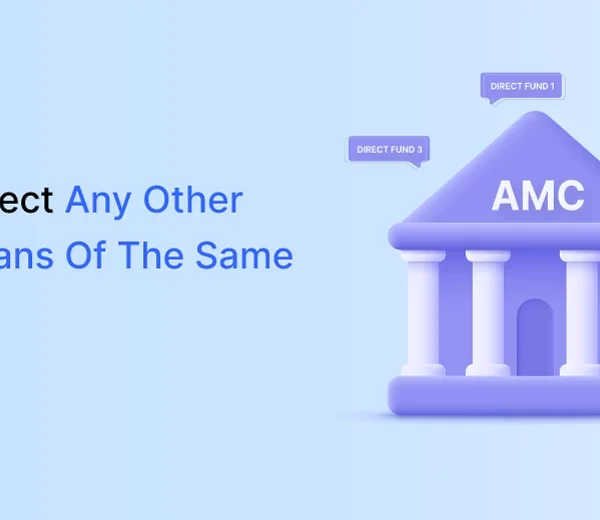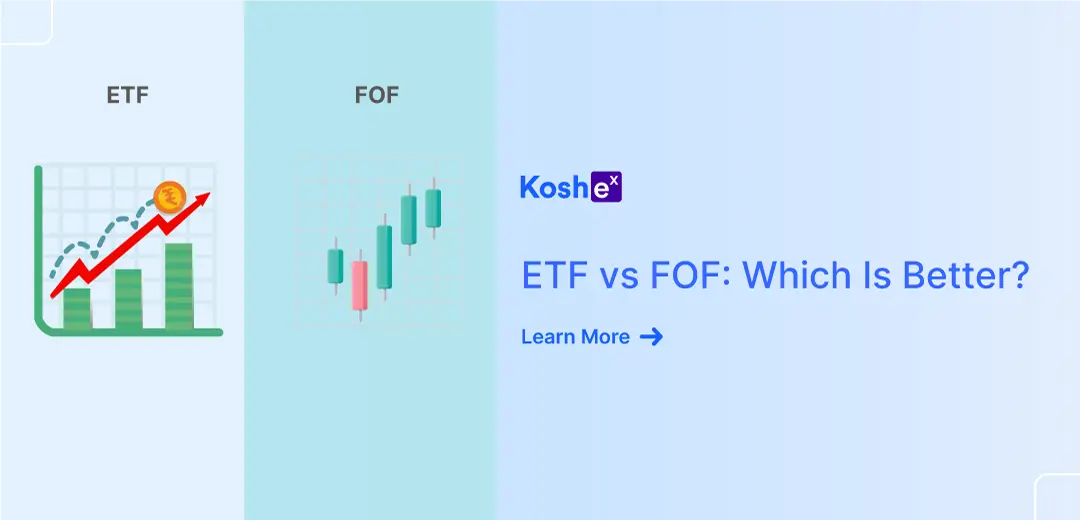Mutual funds are the preferred mode of investment for many investors. They allow investment for as low as ₹100 and help you diversify your portfolio with ease. In the case of mutual funds, all investment decisions are made by the fund managers. This relieves investors who don’t have time to research or are new to the investing world. Investors can find some of the best funds on the Koshex platform.
Net Asset Value (NAV) can be defined as the total value of an investment fund’s assets minus its liabilities divided by the total number of units outstanding. One can calculate the NAV using the following formula:
NAV = (Fund’s Total Assets – Total Liabilities) / No. of Units Outstanding
In short, NAV represents the price of each unit of a mutual fund.
A mutual fund pools money from a large number of investors and reinvests it in the underlying assets as per the terms of the scheme. Since the market value of securities changes every day, the NAV of a scheme also varies on day to day basis. Thus, as per SEBI regulations, mutual fund houses need to declare the NAV at the end of each trading day.
So, how can an investor determine the NAV at which they are allocated the units of mutual funds? What would be the NAV when mutual fund units are sold?
This is where the cut-off timings in mutual funds come into the picture. Let’s explore how they impact the NAV.
What are mutual fund cut-off timings?
The cut-off time determines which day’s NAV will be applicable to a mutual fund transaction.
For instance, suppose the cut-off time is 1 pm.
If one purchases the units at 11 am, they will get the allotted units at the previous day’s NAV.
However, if one purchases the units at 2 pm, they will get the units allotted at the current NAV.
Earlier, there used to be different cut-off timings for different mutual funds. The cut-off timings applicable are given below:
| Scheme | Cut-Off Timing |
| Overnight funds | 1:30 pm |
| Liquid funds | 1:30 pm |
| Redemption | 3:00 pm |
| All other types of funds | 3:00 pm |
SEBI has issued new rules surrounding the cut-off timings in mutual funds. Beginning from 1st February 2021, the NAV for mutual fund transactions will depend upon the realization of funds by the mutual fund house.
- This applies to all purchase transactions of mutual funds, irrespective of the amount of investment, except for liquid and overnight funds.
- It applies to switch-in from other schemes, including the transactions under the Systematic Transfer Plan (STP). Applications for the switch-in shall be treated as purchase transactions and the NAV shall be determined accordingly.
- It shall be applicable on both lump sum and SIP investments.
As per the regulations of SEBI, mutual fund houses should announce the NAVs of all their mutual fund schemes following the closing of the markets. SEBI announced the change in cut-off timings by the issue of Circular No. SEBI/HO/IMD/DF2/CIR/P/2020/175 dated 17th September 2020. The new rules were bought into force by the issue of Circular No. SEBI/HO/IMD/DF2/CIR/P/2020/253 dated 31st December 2020.
As per new cut-off time rules, the applicable NAV will depend upon the availability of the funds in the bank account of the mutual fund house before the transaction. This rule has become applicable to all funds and all types of schemes except overnight funds and liquid funds. Therefore, if the purchase transaction is complete and the funds are available for use up to the cut-off timing in a business day, then the NAV of the same business day shall be applicable. Otherwise, the NAV of the subsequent business day shall be applicable.
Importance of mutual fund cut-off timing
Impact on NAV
Mutual fund cut-off timing can have a significant impact on the NAV of a mutual fund. The NAV is the per-unit value of a mutual fund’s net assets (assets minus liabilities).
The NAV is calculated at the end of each trading day, and any requests to buy or sell mutual fund units before the cut-off time will be executed at that day’s NAV. If one submits a request after the cut-off time, the mutual fund transaction will be executed at the next day’s NAV, which could be higher or lower than the previous day’s NAV.
NAV will also depend on the time at which the request has been given and the time at which the funds reach the fund house’s account.
Timing of investment
Mutual fund cut-off timing determines the timing of one’s investment in the mutual fund.
If one submits a request before the cut-off time, the transaction will be executed on the same day, and they will have immediate exposure to the mutual fund’s assets.
On the other hand, if the request is submitted after the cut-off time, the transaction will be executed on the next trading day. This means that they will have to wait for a day before getting exposure to the mutual fund’s assets.
Timing of redemption
Mutual fund cut-off timing also determines the timing of an investor’s redemption from the mutual fund.
If one submits a redemption request before the cut-off time, the transaction will be executed on the same day, and one will receive the redemption proceeds based on the NAV of the same day.
On the other hand, if a redemption request is submitted after the cut-off time, the mutual fund transaction will be executed on the next trading day. This means that they will have to wait for a day before receiving the redemption proceeds.
Market volatility
Mutual fund cut-off timing is particularly crucial during periods of market volatility. At such phases of high volatility, the NAV of a mutual fund is dynamic and can change significantly from the cut-off time to the end of the trading day.
Investors who submit their requests before the cut-off time can benefit from any upward or downward movement in the NAV.
Those who submit requests after the cut-off time will have to wait for the next day’s NAV, which could be higher or lower.
In a Nutshell…
A mutual fund investor should be aware of the concept of mutual fund cut-off timings. This will ensure that one can make an informed decision about when to enter the market.
The cut-off timing is not significant for SIP investors. The foremost reason is that their cost of investment averages out in the long run. However, if one is a short-term trader of a mutual fund unit or is planning to make a lumpsum investment, it is essential to be aware of mutual fund cut-off timings. When the market is volatile, there can be a significant gap in the NAV for each day.
Koshex allows investors to invest in a variety of assets like mutual funds, smart deposits, digital gold, and fixed deposits. With trendy features such as a real-time net worth tracker and personalized buckets, it enables investors to make informed investment decisions.
Sign up with Koshex and explore all the benefits of using this platform as a smart investor!
FAQs
Q1. From which date is the new rule of the SEBI for mutual fund cut-off timings applicable?
The new rule of the SEBI for mutual fund cut-off timings has been applicable since 1st February 2021.
Q2. Are the new rules of the SEBI for mutual fund cut-off timings applicable to all the schemes of mutual funds?
The new rules of the SEBI for mutual fund cut-off timings apply to all schemes of mutual funds except overnight funds and liquid funds.









Leave a Comment